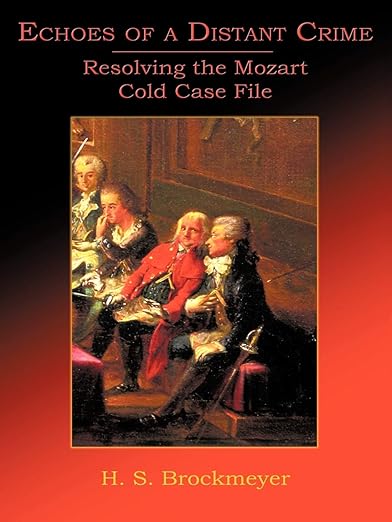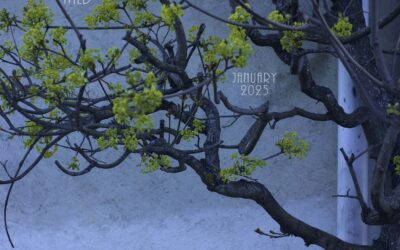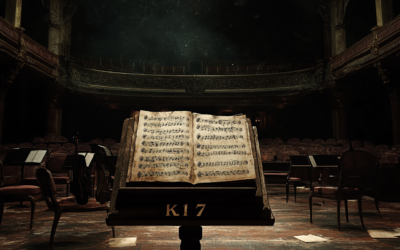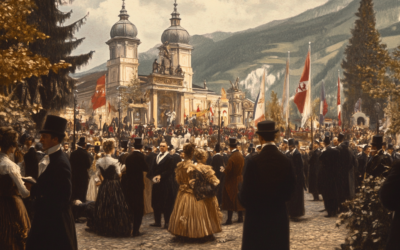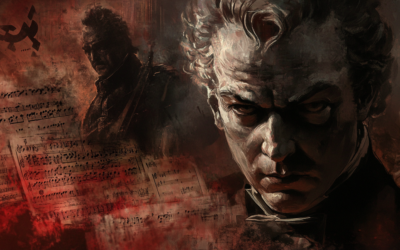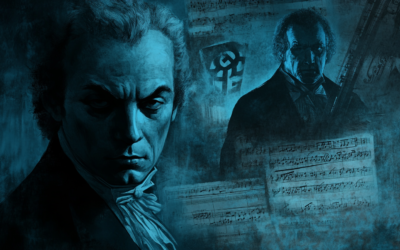Mozart’s Mysterious Letter of July 5, 1791
Unveiling the Truth Behind the Drawing
Mozartrazom is proud to present an extraordinary investigation by H. S. Brockmeyer into the puzzling discrepancies surrounding one of Mozart’s letters to his wife, dated July 5, 1791. What began as a routine request for an image reproduction from the Royal Danish Library turned into a riveting journey uncovering altered artwork, forgotten journals, and a glimpse into Mozart’s personal anxieties during his final year.
H. Brockmeyer’s meticulous research uncovers that the widely reproduced drawing associated with this letter is, in fact, a doctored version. Through detective work and historical cross-referencing, she reveals Mozart’s original, unembellished sketch—a rare insight into his psyche, marked by fears of persecution.
But the mystery doesn’t stop there. Why was Mozart’s original drawing altered? Who decided to modify it, and what does this reveal about how Mozart’s legacy has been shaped over the centuries?
H. Brockmeyer’s article is a must-read for anyone intrigued by Mozart’s life and the intersection of art and historical narrative.
“Mozart was a great musician, but not a great artist; still, there was no need to change his drawing.”
H. S. Brockmeyer
The Mystery of Mozart’s July 5, 1791 Letter
H. Brockmeyer delves into a captivating mystery surrounding one of Mozart’s letters to his wife, written on July 5, 1791. The investigation reveals discrepancies in the artwork associated with the letter and sheds light on Mozart’s personal anxieties and the legacy of his correspondence.
A Search for the Original Letter
The inquiry began with a request to reproduce the drawing associated with the July 5 letter, widely reproduced in collections like The Letters of Mozart & His Family. Directed to the Royal Danish Library, H. Brockmeyer learned that the letter was part of the Boye family donation, likely originating from Constanze Mozart’s time in Denmark. However, the letter did not include the drawing being sought, raising questions about its authenticity.
The Role of the Royal Danish Library
Thanks to the efforts of librarian Laura Søvsø Thomasen, the original drawing was discovered in an 1890 Danish literary journal, Literatur Og Kritik. This journal featured three letters from Mozart, including the July 5 letter with the original sketch. The discovery offered a side-by-side comparison of Mozart’s original drawing and a more “artistic” version that had replaced it in modern reproductions.
Mozart’s Original Drawing vs. the Altered Version
The two drawings differ significantly. Mozart’s original is simplistic and raw, while the altered version attempts to make it appear more polished. The article suggests this modification reflects a deliberate effort to enhance Mozart’s legacy, perhaps to mask his lack of artistic skill in visual arts. Both drawings, however, reveal a similar emotional tone—Mozart’s fear of persecution in his final year.
Historical Context and Legacy
The altered drawing adds to the broader narrative of how Mozart’s legacy has been shaped posthumously. Constanze, known for gifting Mozart-related items, may have played a role in disseminating the letters. Furthermore, the enigmatic tone of Mozart’s correspondence during 1791 is highlighted, referencing his sense of rejection and precarious circumstances.
Conclusion
H. Brockmeyer’s article not only uncovers a significant discrepancy in Mozart scholarship but also raises questions about how historical figures are curated for posterity. The discovery of the original drawing brings us closer to understanding Mozart as a person—flawed, anxious, and yet profoundly human.
You May Also Like
Constanze Mozart’s Enduring Love
Although some have doubted her devotion, Constanze’s own words and actions illustrate a widow deeply committed to preserving Mozart’s legacy. Diaries, personal correspondence, and eyewitness testimony all challenge the notion that she neglected his memory—while the circumstances around his burial grow ever more perplexing.
A Revealing New Interview on His Thematic Catalogue
We’re excited to present a brand-new interview that challenges many of the long-held assumptions about Mozart’s Thematic Catalogue (1784–1791). Conducted by Swedish journalist Henry Grynnsten, this conversation delves into groundbreaking forensic techniques—like advanced ink analysis and digital image processing—that may change the way we view Mozart’s late works.
The Rattling Symphony: A Critical Take on K. 17
Often attributed to Mozart, the K. 17 symphony is anything but refined. Lacking orchestration and filled with gaps, it raises more questions than answers about its true authorship.
The Hidden Origins of the Salzburg Festival: A Nationalist Dream
The Salzburg Festival, far from being a mere celebration of Mozart’s genius, was born out of nationalist ambitions during a turbulent period in Austro-German history. Conceived by figures like Max Reinhardt, Heinrich Damisch, and Friedrich Gehmacher, the festival was deeply rooted in ultranationalistic ideals, transforming Mozart’s legacy into a tool for cultural dominance. The truth behind its founding has long been obscured, but the primary sources tell a different, darker story.
Mozart, Wagner, and the Nazi Myth
The Führer’s admiration for Wagner’s racially charged ideology not only influenced the policies of the Nazi regime but also reshaped the legacy of Mozart. Under National Socialism, Mozart was not celebrated as a universal genius but as a symbol of German purity and superiority. His music, stripped of its international influence, was rebranded as an expression of Aryan identity, intended to unify and inspire the German people.
Mozart, the Anschluss, and Nazi Propaganda
Following the 1938 Anschluss, the Nazi regime rebranded Mozart as the quintessential German composer, using his image to promote unity between Austria and Germany. The Salzburg Festival became a platform for Nazi propaganda, distorting Mozart’s legacy to fit their nationalistic and racial agenda.

